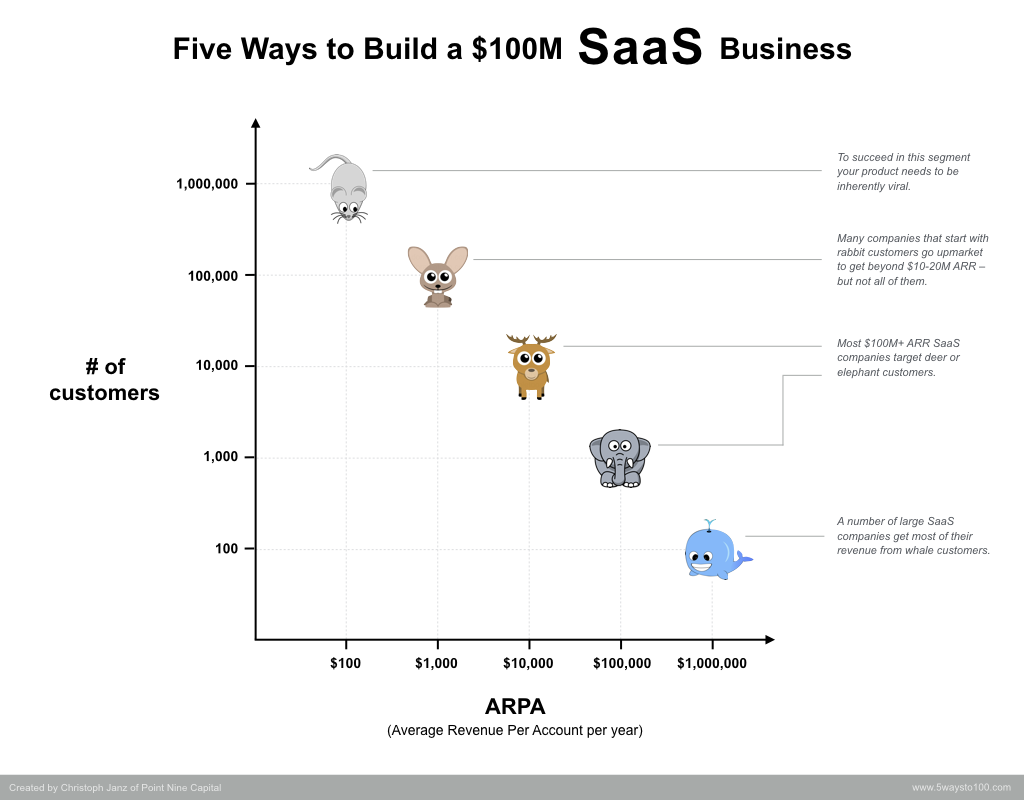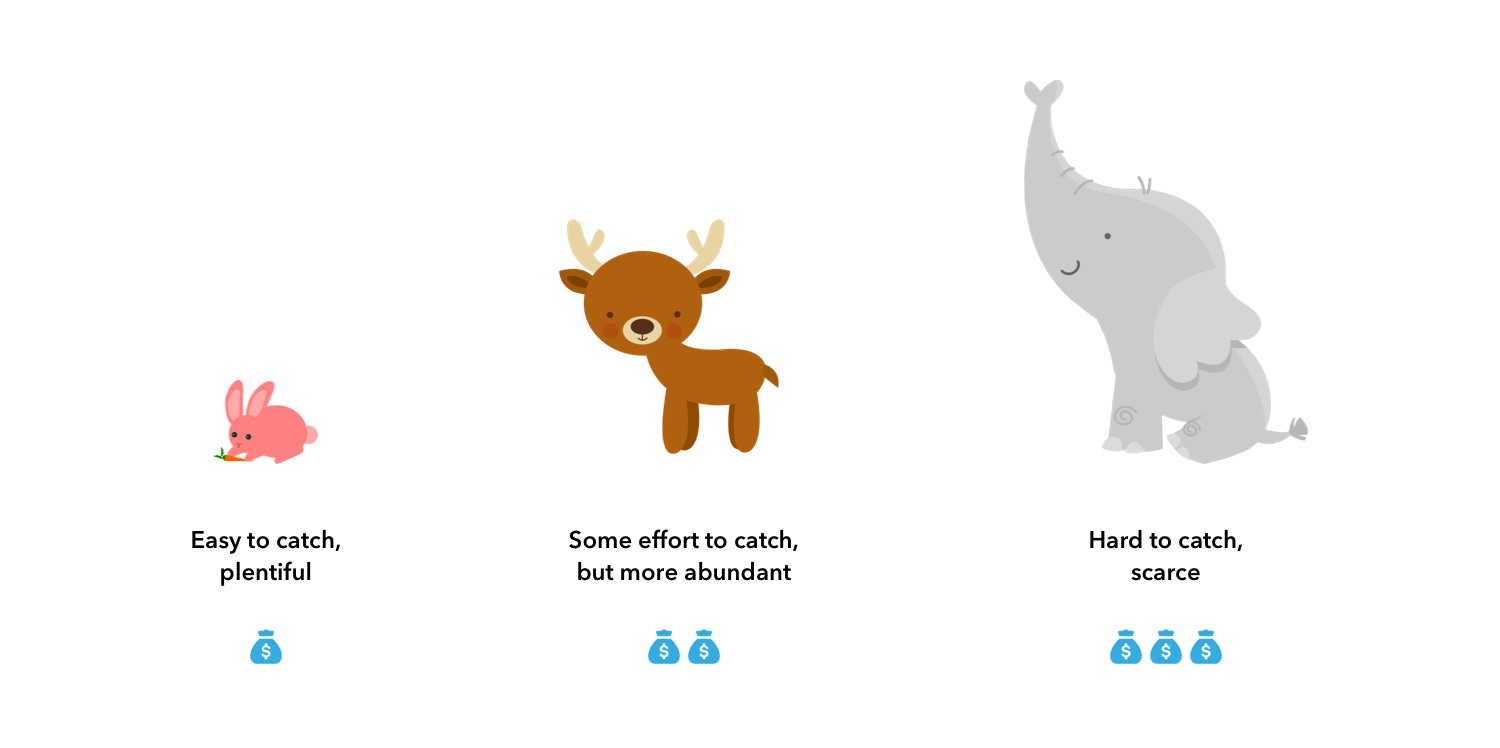Chapter 5
9 minutes
Frame.io's story: How to move upmarket
Over one million video professionals use Frame.io to collaborate on video projects. If a film’s visual effects team is in London, its director is in L.A., and its producer is in Miami, they can all meet in Frame.io to review creatives.
Frame.io was about five years old when the company made a concerted effort to grow upmarket, and their Director of Growth, Emily Kalen, shared with us their approach to choosing which segments to prioritize and push into.
Frame.io started out with a self-serve product for consumers and video prosumers in 2015 and soon began adding an enterprise product for larger teams, agencies, and content powerhouses like BuzzFeed and Vice. In 2018, Frame.io built out their enterprise sales motion and when they raised a $50M Series C round in November 2019, they were ready to push upmarket with more gas in the tank. Their new financial resources let them build out their teams and formalize their upmarket strategy through product, marketing, and sales.
Emily joined a few months before the raise, so she inherited a prosumer-focused growth playbook that wouldn’t work for the Frame.io of tomorrow. She needed to rework things and start attracting larger businesses in a scalable way.
But which larger businesses? Should she focus on medium-sized video teams, big enterprises, or a combination? For every Netflix and Google, there was a Masterclass and Loom. There were brands she’d heard of, like TED and Condé Nast, and plenty she hadn’t, like small, up-and-coming motion studios.
Emily and her team needed to know which segments to divide Frame.io's upmarket universe into and which ones to prioritize in their growth tactics.
“Finding upmarket potential is a pretty common evolution that SaaS businesses have to go through at some point in their journey.”
- Emily Kalen, Director of Growth, Frame.io
So they started simple. They sought to define what “big,” “medium,” and “small” meant in their world, using VC Christoph Janz’s framework for understanding potential audiences.
Hear more from Emily in Moving upmarket: how to shift your growth tactics (45 minutes)
Understanding bunnies, deer, and elephants: Christoph Janz’s SaaS framework
Janz lays out a simple framework for thinking about potential segments for a SaaS business, based on average revenue per account, in his articles on ways to build a $100M business and its follow-up five years later. He likens it to hunting — does your company go for big, hard-to-catch animals, or does it prefer smaller, easier-to-catch critters? (Incidentally, Janz is a vegetarian, and he apologizes for the hunting analogy.)
 Source: Christoph Janz
Source: Christoph JanzProspective customers can be organized along two axes: their revenue potential and how plentiful they need to be in the ecosystem to be a viable market that can make your company’s goals a reality.
On one end you’ve got small animals (companies) like 🐰 bunnies, which are plentiful and easy to catch (convert). But they have a relatively low value to your business as individual units. Frame.io had been bunny-catching for five years and their main customers were self-serve consumers, prosumers, and small teams.
Mid-sized animals like 🦌 deer are a little harder to find and catch than bunnies, but they yield more revenue.
And at the top are 🐘 elephants, which are scarce and difficult to catch, but provide a lot of revenue.

Who's hunting who?
Here are some real-life examples, according to Point Nine Capital. (Note that this is just for illustration and companies may market to a combination of segments.)
🐰 Bunnies: RingCentral, Shopify, and Mindbody are examples of companies that go after small-business bunnies. They often rely on getting many trial signups and converting a small fraction of them to paying customers. As a benchmark, Janz says that the average contract value of a bunny is $1,000 per year, so if a company wants to make 100 million ARR from bunnies, they need about 0.5 to 2 million free trials to convert 100,000 of them into paying customers, aiming for about $100 CPA.
🦌 Deer: HubSpot and Atlassian are examples of deer hunters that market to medium-sized businesses. Janz puts a deer's average ACV at $10,000.
🐘 Elephants: Salesforce and Eloqua hunt enterprise elephants with $100,000+ average ACV. Janz also cites Algolia, Contentful, and Zendesk as companies that have used "bottom-up" adoption of their products to become successful elephant hunters.
Back at Frame.io, it was time for Emily to identify what her deer and elephant segments looked like — bigger than bunnies. She began to drop Frame.io's customers into those three buckets, mostly based on the number of people using their platform.
Understanding different segments also required Emily to know how Frame.io's product fit into the customer's world. She says that understanding customers before identifying market segments is incredibly important. Customer research should happen upfront and continue as your userbase evolves. You can:
- Talk to your customers and ask them questions about how they use your product.
- Create forums for customers to give feedback on what they’re missing.
- Speak to customer-facing teammates in sales and success.
- Track in-product usage behavior.
As Frame.io evaluated team size, informed by customer research, their upmarket segments were starting to form. The next step was to decide which were the best ones to market to.
"The more you can organize your customers and understand them before you start identifying market segments, the better. It’s an ongoing process—as the Frame.io customer base evolves, there’s a lot we learn and keep checking back on."
- Emily Kalen, Director of Growth, Frame.io
Deciding which types of upmarket segments are best for your company’s goals
Frame.io wanted to go after leads that sat at a specific sweet spot on two axes:
- Ease of conversion
- Potential for scale
For Frame.io, the potential for scale was related to a company's ability to add seats and storage, which would expand their contract over time. And ease of conversion was all about the length and complexity of the sales cycle. Emily identified a group of customers with the right balance of these two elements.
"Finding the balance of who is easy or difficult to convert, and who has low or high scalability, will help you find that white space you can define as your upmarket segment. 'Where does my product fit for these types of companies?' is a good question to ask, too."
- Emily Kalen, Director of Growth, Frame.io
Finding common attributes for your ICP and using it to understand TAM
Next, Emily looked at which attributes these companies shared. She was looking for firmographic data points that would help Frame.io identify leads in that sweet-spot upmarket segment.
She enriched the customer lists with Clearbit data and examined their shared characteristics, evaluating points like:
- Employee size
- Annual revenue
- Company tags
- Keywords in their business description
- Industry
She found the shared firmographic attributes that identified a new lead as a bunny, a deer, or an elephant.
These firmographic data points allowed her to undertake a total addressable market (TAM) exercise and research Frame.io's potential for these upmarket segments. They calculated how many companies matched these customer profiles, as well as their revenue potential, estimated by multiplying the potential number of seats with the annual cost per seat.
Emily also leaned on customer research to understand these ideal customers in a qualitative light:
- What were their biggest pain points?
- Did Frame.io's product solve their problem?
- Who was involved in deciding to buy the product?
She fleshed out the picture even more with Clearbit demographic data points, to understand the people who purchased and used Frame.
👩 Who are the people behind your ICP?
As you create company target segments at the firmographic level, you can go deeper and identify the specific personas or employee profiles involved in the purchase decision.
There are usually more people involved in the purchase decision as you go upmarket. On one end of the spectrum you're marketing to individual consumers and prosumers; then you're marketing to teams, and then to big teams. The bigger you go, the more complex.
Consider four types of people:
- Everyday users: The end-users of your product
- Financial decision makers: The people who sign the check
- Champions: The power users who drive internal adoption and usage
- Other stakeholders: People who are consulted during the buying process but aren't a marketing audience.
Just as Frame.io examined the firmographic attributes of successful companies to define their ideal customer, you can use Clearbit demographic attributes to paint a data-driven picture of important personas at those companies. Their characteristics include:
- Role
- Department or team
- Seniority level
Adjusting the growth playbook
Emily now had a sense for what types of companies sat in the sweet spot of conversion complexity and potential for scale — and she also had a feel for how many of them existed in Frame.io's TAM. She understood their needs, how Frame.io solved their problems, and which personas would influence the purchase decision.
It was time to adjust Frame.io's growth playbook and work cross-functionally, enabling teams across Frame.io to create a great experience for the new, prioritized upmarket segments.
Emily recommends looking at the following areas:
1. Demand generation
- Adjusting lead scoring models to prioritize ideal companies and their most valuable personas.
- Testing new experiences in content, ads, and landing pages, as well as the info collected on lead forms.
- Changing ad targeting — Frame.io used Clearbit Advertising to target upmarket customers on Facebook.
2. Account-based Marketing
- Selecting target companies and stakeholders
- Creating hyper-personalized marketing experiences to accelerate deals
3. Lifecycle marketing
- Understanding how the needs of upmarket customers evolve over time to create a cohesive lifecycle experience. This requires the collaboration of product, marketing, success, and sales teams.
4. Product roadmap
- Figuring out the most important features your product is missing to meet elephant’s or deer’s needs, which may be very different from the needs of bunnies.
- Prioritizing maintenance and improvement of the existing features elephants and deer rely on most.
With these adjustments and more, Frame.io was able to grow beyond their self-serve business and push into upmarket segments.
Let’s now look at a different type of strategy change a SaaS company can face. What happens when a company’s ICP has helped them grow at all costs—and then started focusing on the most profitable segments?

